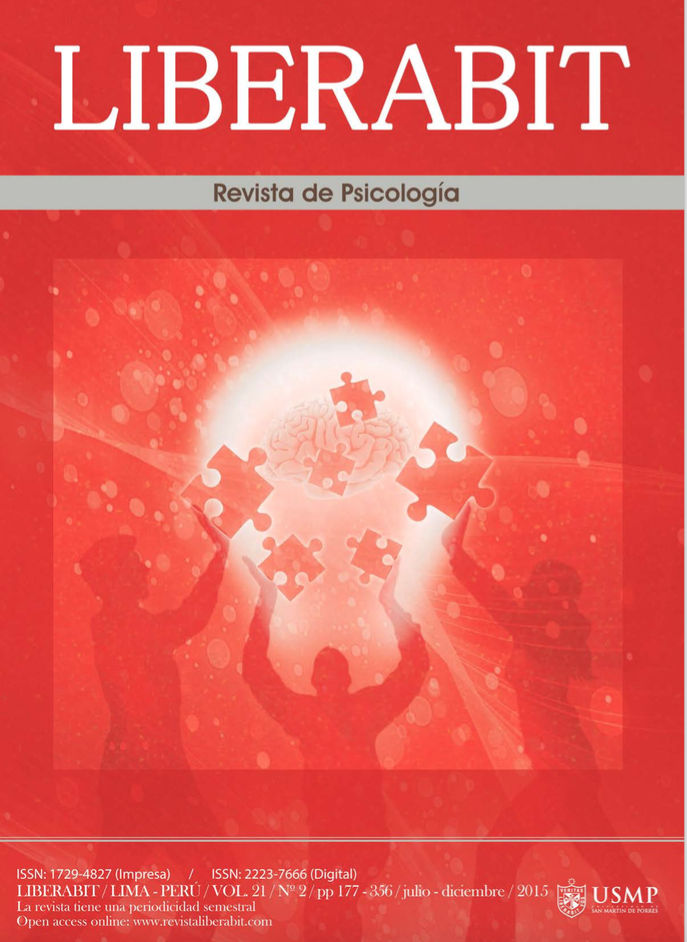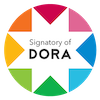Las propiedades farmacocinéticas del ayahuasca
Palabras clave:
Ayahuasca, alucinógenos, farmacocinética, toxicidadResumen
Se describe las características químicas y los efectos del consumo del ayahuasca para conocer el estado actual de los descubrimientos existentes hasta la fecha sobre sus propiedades farmacocinéticas. Se realizó una revisión bibliográfica sobre estudios del ayahuasca hasta el año 2013 en inglés, español y portugués en las bases de datos de PubMed, PsycINFO, Psyke, Psicodoc y Redalyc, así como en capítulos de libros y bibliografía relacionada obtenida de investigaciones afines. Se concluye que uno de los componentes del ayahuasca, la harmina, puede ser utilizada para tratar diferentes patologías.
Descargas
Referencias
Bain, J., Plater, L., Elliott, M., Shpiro, N., Hastie, C., McLauchlan, H., ... & Cohen, P. (2007). The Selectivity of Protein Kinase Inhibitors: a Further Update. Biochemical Journal, 408(3), 297-315.
Barbanoj, M. J., Riba, J., Clos, S., Giménez, S., Grasa, E., & Romero, S. (2008). Daytime Ayahuasca Administration Modulates REM and Slow-Wave Sleep in Healthy Volunteers. Psychopharmacology, 196(2), 315-326.
Barbosa, P. C. R., Giglio, J. S., & Dalgalarrondo, P. (2005). Altered States of Consciousness and Short-Term Psychological After-Effects Induced by the First Time Ritual Use of Ayahuasca in an Urban Context in Brazil. Journal of Psychoactive Drugs, 37(2), 193-201.
Bouso, J. C., González, D., Fondevila, S., Cutchet, M., Fernández, X., Barbosa, P. C. R., ... & Riba, J. (2012). Personality, Psychopathology, Life Attitudes and Neuropsychological Performance among Ritual Users of Ayahuasca: a Longitudinal Study. PLoS One, 7(8), e42421.
Brierley, D. I. & Davidson, C. (2012). Developments in Harmine Pharmacology- Implications for Ayahuasca Use and Drug-Dependence Treatment. Progress in Neuro-Psychopharmacology and Biological Psychiatry, 39(2), 263-272.
Callaway, J. C., Airaksinen, M. M., McKenna, D. J., Brito, G. S., & Grob, C. S. (1994). Platelet Serotonin Uptake Sites Increased in Drinkers of Ayahuasca. Psychopharmacology, 116(3), 385-387.
Callaway, J. C., Raymon, L. P., Hearn, W. L., McKenna, D. J., Grob, C. S., Brito, G. S., & Mash, D. C. (1996). Quantitation of N, N-dimethyltryptamine and Harmala Alkaloids in Human Plasma after Oral Dosing with Ayahuasca. Journal of Analytical Toxicology, 20(6), 492-497.
Callaway, J. C., McKenna, D. J., Grob, C. S., Brito, G., Raymon, L. P., Poland, R. E., ... & Mash, D. C. (1999). Pharmacokinetics of Hoasca Alkaloids in Healthy Humans. Journal of Ethnopharmacology, 65(3), 243-256.
Callaway, J. C., Grob, C. S., McKenna, D. J., Nichols, D. E., Shulgins, A., & Tupper, K. W. (2006). A Demand for Clarity Regarding a Case Report on the Ingestion of 5- methoxy-N, N-dimethyltryptamine (5-MeO-DMT) in an Ayahuasca Preparation. Journal of Analytical Toxicology, 30(6), 406-407.
Cavnar, C. (2011). The Effects of Participation in Ayahuasca Rituals on Gays’ and Lesbians’ Self Perception (Disertación doctoral). John F. Kennedy University, Pleasant Hill, CA. Recuperado de http://www.neip.info/upd_blob/0001/ 1455.pdf
Dai, F., Chen, Y., Song, Y., Huang, L., Zhai, D., Dong, Y., ... & Yi, Z. (2012). A Natural Small Molecule Harmine Inhibits Angiogenesis and Suppresses Tumour Growth Through Activation of p53 in Endothelial Cells. PloS One, 7(12), e52162.
Drucker, G., Raikoff, K., Neafsey, E. J., & Collins, M. A. (1990). Dopamine Uptake Inhibitory Capacities of β-Carboline and 3, 4-Dihydro-β-Carboline Analogs of N-Methyl-4-Phenyl1, 2, 3, 6-Tetrahydropyridine (MPTP) Oxidation Products. Brain Research, 509(1), 125-133.
Fábregas, J. M., González, D., Fondevila, S., Cutchet, M., Fernández, X., Barbosa, P. C. R., ... & Bouso, J. C. (2010). Assessment of Addiction Severity Among Ritual Users of Ayahuasca. Drug and Alcohol Dependence, 111(3), 257-261.
Fortunato, J. J., Réus, G. Z., Kirsch, T. R., Stringari, R. B., Fries, G. R., Kapczinski, F., ... & Quevedo, J. (2010a). Effects of β-Carboline Harmine on Behavioral and Physiological Parameters Observed in the Chronic Mild Stress Model: Further Evidence of Antidepressant Properties. Brain Research Bulletin, 81(4), 491-496.
Fortunato, J. J., Réus, G. Z., Kirsch, T. R., Stringari, R. B., Fries, G. R., Kapczinski, F., ... & Quevedo, J. (2010b). Chronic Administration of Harmine Elicits Antidepressant-Like Effects and Increases BDNF Levels in Rat Hippocampus. Journal of Neural Transmission, 117(10), 1131-1137.
Frecska, E. (2007). Therapeutic Guidelines: Dangers and Contra-Indications in Therapeutic Applications of Hallucinogens. Psychedelic Medicine: New Evidence for Hallucinogenic Substances as Treatments, 1, 69-95.
Gable, R. S. (2007). Risk assessment of ritual use of oral dimethyltryptamine (DMT) and harmala alkaloids. Addiction, 102(1), 24-34.
Grella, B., Teitler, M., Smith, C., Herrick-Davis, K., & Glennon, R. A. (2003). Binding of β-Carbolines at 5-HT 2 Serotonin Receptors. Bioorganic & Medicinal Chemistry Letters, 13(24), 4421-4425.
Grob, C. S., Mckenna, D. J., Callaway, J. C., Brito, G. S., Neves, E. S., Oberlaender, G., ... & Boone, K. B. (1996). Human Psychopharmacology of Hoasca, a Plant Hallucinogen Used in Ritual Context in Brazil. The Journal of Nervous and Mental Disease, 184(2), 86-94.
Halpern, J. H., Sherwood, A. R., Passie, T., Blackwell, K. C., & Ruttenber, A. J. (2008). Evidence of Health and Safety in American Members of a Religion Who Use a Hallucinogenic Sacrament. Medical Science Monitor, 14(8), SR15-SR22.
Heo, H. J. & Lee, C. Y. (2005). Epicatechin and Catechin in Cocoa Inhibit Amyloid β Protein Induced Apoptosis. Journal of Agricultural and Food Chemistry, 53(5), 1445-1448.
Holmstedt, B. O. & Lindgren, J. (1967). Chemical Constituents and Pharmacology of South American Snuffs. Psychopharmacology Bulletin, 4(3), 16.
Holt, A. (2003). Imidazoline Binding Sites on Receptors and Enzymes: Emerging Targets for Novel Antidepressant Drugs? Journal of Psychiatry and Neuroscience, 28(6), 409-414.
Husbands, S. M., Glennon, R. A., Gorgerat, S., Gough, R., Tyacke, R., Crosby, J., ... & Hudson, A. L. (2001). βcarboline Binding to Imidazoline Receptors. Drug and Alcohol Dependence, 64(2), 203-208.
Labate, B. C. (2011). Consumption of Ayahuasca by Children and Pregnant Women: Medical Controversies and Religious Perspectives. Journal of Psychoactive Drugs, 43(1), 27-35.
Leibenluft, E. & Wehr, T. A. (1992). Is Sleep Deprivation Useful in the Treatment of Depression? The American Journal of Psychiatry, 149(2), 159.
Lima, F. A. S. & Tófoli, L. F. (2011). An Epidemiological Surveillance System by the UDV: Mental Health Recommendations Concerning the Religious Use of Hoasca. En B. C. Labate & H. Jungaberle (Eds.), The Internationalization of Ayahuasca (pp.185-189). Zürich: LIT Verlag Münster.
Lima, F., Naves, M., Motta, J., Migueli, J., & Brito, G. (2002). Sistema de monitoramento psiquiátrico em usuários do chá hoasca. Revista Brasileira de Psiquiatria, 24.
Luna, L. E. (2011). Indigenous and Mestizo Use of Ayahuasca: an Overview. En R. G. dos Santos (Ed), The Etnopharmacology of Ayahuasca (pp. 1-21). Recuperado de http://ejournal.narotama.ac.id/files/Indigenous %20and%20mestizo%20use%20of%20Ayahuasca. %20An%20overview.pdf
Mabit, J. (1996). Takiwasi: Ayahuasca and Shamanism in Addiction Therapy. MAPS Newsletter, 6(3), 34-40.
Mabit, J. (2002). Using Indigenous Medicinal Knowledge to Treat Drug Addiction. MAPS Bull, 12(2), 25-32.
McKenna, D. J., Towers, G. N., & Abbott, F. (1984). Monoamine Oxidase Inhibitors in South American Hallucinogenic Plants: Tryptamine and β-Carboline Constituents of Ayahuasca. Journal of Ethnopharmacology, 10(2), 195-223.
Osório, F. L, Macedo, L. R. H. de, Sousa, J. P. M. de, Pinto, J. P., Quevedo, J., Souza Crippa, J. A. de, & Hallak, J. E. C. (2011). The Therapeutic Potential of Harmine and Ayahuasca in Depression: Evidence from Exploratory Animal and Human Studies. En R. G. dos Santos (Ed), The etnopharmacology of ayahuasca (pp. 75-85). Recuperado de http://srv1.iceers.org/docs/science/ayahuasca/ Rafael_Guimares_The%20Ethnopharmacology_of_Ayahuasca/ EthnopharmAyahuasca_Chapter5.pdf
Quirce-Balma, C. M., Badilla-Baltodano, B., Badilla-Chaves, S., Martínez-Herrera, M., & Rodríguez, J. M. (2010). Los alucinógenos: su historia, antropología, química y farmacología. Psicogente 13(23), 174-192.
Riba, J. (2003a). Human pharmacology of Ayahuasca (Tesis doctoral). Universitat Autònoma de Barcelona, España. Recuperado de http://www.tdx.cesca.es/TDX-0701104165104/
Riba, J. & Barbanoj, M. J. (2005). Bringing Ayahuasca to the Clinical Research Laboratory. Journal of Psychoactive Drugs, 37(2), 219-230.
Riba, J., Anderer, P., Jané F., Saletu, B., & Barbanoj, M. J. (2004). Effects of the South American Psychoactive Beverage Ayahuasca on Regional Brain Electrical Activity in Humans: A Functional Neuroimaging Study Using Low-Resolution Electromagnetic Tomography. Neuropsychobiology 50(1), 89-101.
Riba, J., Rodríguez-Fornells, A., Urbano, G., Morte, A., Antonijoan, R., Montero, M., ... & Barbanoj, M. J. (2001). Subjective Effects and Tolerability of the South American Psychoactive Beverage Ayahuasca in Healthy Volunteers. Psychopharmacology, 154(1), 85-95.
Santos, R. G. dos. (2011). Ayahuasca: Physiological and Subjective Effects, Comparison with d-amphetamine, and Repeated Dose Assessment (Tesis doctoral). Universitat Autònoma de Barcelona, España. Recuperado de https:// www.educacion.gob.es/teseo/mostrarRef.do
Santos, R. G. dos, Valle, M., Bouso, J. C., Nomdedéu, J. F., Rodríguez-Espinosa, J., McIlhenny, E. H., ... & Riba, J. (2011). Autonomic, Neuroendocrine, and Immunological Effects of Ayahuasca: a Comparative Study with d-amphetamine. Journal of Clinical. Psychopharmacology, 31(6), 717-726. Santos, R. G. dos, Grasa, E., Valle, M., Ballester, M. R., Bouso,
J. C., Nomdedéu, J. F., ... & Riba, J. (2012). Pharmacology of Ayahuasca Administered in Two Repeated Doses. Psychopharmacology, 219(4), 1039-1053.
Scherschlicht, R., Polc, P., Schneeberger, J., Steiner, M., & Haefely, W. (1982). Selective Suppression of Rapid Eye Movement Sleep (REMS) in Cats by Typical and Atypical Antidepressants. Advances in Biochemical Psychopharmacology, 31, 359-364.
Schwarz, M. J., Houghton, P. J., Rose, S., Jenner, P., & Lees, A. D. (2003). Activities of Extract and Constituents of Banisteriopsis caapi Relevant to Parkinsonism. Pharmacology Biochemistry and Behavior, 75(3), 627-633.
Serrano, M., Cardozo, F., & Sánchez, J. (2001). Effects of Banisteriopsis caapi Extract on Parkinson’s disease. The Scientific Review of Alternative Medicine, 5(3), 127-132.
Sitz, J. H., Baumgärtel, K., Hämmerle, B., Papadopoulos, C., Hekerman, P., Tejedor, F. J., ... & Lutz, B. (2008). The Down Syndrome Candidate Dual-Specificity Tyrosine Phosphorylation-Regulated Kinase 1A Phosphorylates the Neurodegeneration- Related Septin 4. Neuroscience, 157(3), 596-605.
Sklerov, J., Levine, B., Moore, K. A., King, T., & Fowler, D. (2005). A Fatal Intoxication Following the Ingestion of 5Methoxy-N, N-Dimethyltryptamine in an Ayahuasca Preparation. Journal of Analytical Toxicology, 29(8), 838-841.
Stahl, S. M. & Felker, A. (2008). Monoamine Oxidase Inhibitors: a Modern Guide to an Unrequited Class of Antidepressants. CNS Spectrums, 13(10), 855-871.
Vogel, G. W., Buffenstein, A., Minter, K., & Hennessey, A. (1990). Drug Effects on REM Sleep and on Endogenous Depression. Neuroscience & Biobehavioral Reviews, 14(1), 49-63.
Vollenweider, F. X. & Kometer, M. (2010). The Neurobiology of Psychedelic Drugs: Implications for the Treatment of Mood Disorders. Nature Reviews Neuroscience, 11(9), 642-651.
Wang, Y. H., Samoylenko, V., Tekwani, B. L., Khan, I. A., Miller, L. S., Chaurasiya, N. D., ... & Muhammad, I. (2010). Composition, Standardization and Chemical Profiling of Banisteriopsis caapi, a Plant for the Treatment of Neurodegenerative Disorders Relevant to Parkinson’s Disease. Journal of Ethnopharmacology, 128(3), 662-671.
Warren, R. J. (2004). Fatal Nicotine Intoxication Resulting from the Ingestión of «Ayahuasca». Journal of Analytical Toxicology, 28(4), 287.
Descargas
Publicado
Número
Sección
Licencia
Derechos de autor: En caso de que el manuscrito sea aprobado para su publicación, los autores conservarán los derechos de autoría y cederán a la revista los derechos de publicación, edición, reproducción, distribución, exhibición y comunicación a nivel nacional e internacional en las diferentes bases de datos, repositorios y portales.
Política de autoarchivo: El autor puede compartir, difundir y divulgar sus investigaciones publicadas por los medios de comunicación (e.g., redes sociales académicas, repositorios y portales) disponibles en la web. Durante el proceso de revisión editorial, la revista entregará al autor las versiones previas (post-print), las cuales NO deben ser divulgadas por ningún medio de difusión y son solo de uso personal con fines de aprobación final. Liberabit enviará al autor la versión final del artículo (published version) en formato PDF y HTML para ser compartida, difundida y divulgada por los medios de comunicación disponibles en la web. Después de la publicación de los artículos, los autores pueden realizar acuerdos independientes o adicionales para la difusión no exclusiva de la versión del artículo publicado en la revista (por ejemplo, publicación en libros o repositorios institucionales), siempre que se indique con la referencia respectiva que el trabajo ha sido publicado por primera vez en esta revista.







